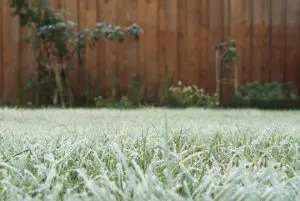Tips for Maintaining a Healthy Lawn During Winter Dormancy
During winter, people often forget about their lawn.
After all, you’ve got snow on it and you’re not going to do much with it anyway, right? Wrong! In winter, injuring a dormant lawn can lead to some serious spring troubles for your grass.
In this post, we will talk about how to avoid damaging your lawn during the winter.
What is Dormant Lawn?
A dormant lawn refers to a lawn that is not currently growing. It may have gone brown, and might be plastered with snow, but it is still alive. Grass typically goes dormant in the winter: It’s too cold for photosynthesis to occur.
That means, for it to survive, it needs something other than the ordinary. In spring, this can cause all kinds of problems like dead patches and stunted growth if the lawn is compromised when it is sleeping.
How Not to Mow a Dormant Lawn
So here are a few ways you can ensure that dormant lawn won’t get damaged this winter.
Here are some aspects to keep in mind:
Beware of Tools
- Avoid raking or shoveling snow off your lawn.
- This can destroy the grass and upend the soil.
- Instead of removing the snow from your lawn, do it with a snow blower or a pushbroom.
- Or don’t allow the snow to pile up too much, if you can avoid it.
- You don’t want to oversaturate your lawn.
Tread Lightly
Don’t walk on your lawn when frost or ice sits atop it; doing so can compact the soil and damage the grass. It can create dead patches in the spring. Instead, walk onto another part of your property where no grass is growing.
Get Stingy with Salt
Cut down on salt or other deicing materials that you apply to your property in the winter months.
That, too, can damage grass and soil and hinder spring growth. If ice is on the ground, look instead for sand or sawdust to make walking surfaces safer for you and those you love.
Finding A Grower
Water Sparingly
Watering your yard in the winter will do nothing but freeze the grass in your yard, and will eventually kill it.
In some places, if you’re under snow cover for much of the winter, you don’t have to water your lawn. In fact, excessive watering can do damage to the sensitive root system of your lawn. Let nature do it instead!
Protect Dormant Grass
If it has gone dormant, there are steps you can also take to protect it from damage. Spread a thin layer of mulch on your lawn to protect it from cold weather. Mulch is going to keep the soil warm and moist and keep the weeds down, as well.
How to Start New After Damaging a Dormant Lawn
If you’ve already harmed your dormant lawn, you might weigh a couple of choices.
You can repair, reseed, or replace.
Repair Damage Yourself
You may be able to repair the damage yourself — or you may need to pay a pro to handle it.
If you have only a few dead spots, you can reseed those areas and water them regularly as temperatures rise.
Reseed the Lawn
In the event of substantial damage, you might have to re-seed the whole lawn.
It’s an expensive and time-consuming job, so think about hiring a pro.
Seeding in the context of your lawn means ripping out that old lawn, prepping the soil, and broadcasting and fertilizing seed.
After that, you’ll need to water judiciously until a new lawn is established.
Replace with The New Sod
Rather than messing around with seed, you may decide to lay new sod down.
Sod for Lawns is better since your new lawn will be established much faster and healthy earlier. Sod, however, is more expensive than seed.
If you lay new sod, make it a hearty turf like Bermuda or Zoysia grass so you don’t have this problem next winter.
Avoid Damaging a Dormant Lawn
The most common mistake homeowners make in the fall is winter damage done to your dormant lawn.
- If you’re not careful, you could be wasting time and money.
- But, thankfully, here are things you can do to avoid ruining a dormant lawn in winter!
- And if you decide your lawn is a lost cause, you can always replace it with beautiful thick sod!
Safeguarding your dormant lawn during winter is essential to green up the upcoming spring. By using preventative measures and precautions, you can keep your green healthy while avoiding common failures.
If it’s damaged, you have options for recovery, whether it be minor patch repair or reseeding or sod placement. A little investment in winter lawn care will surely give you a healthy lawn when those warmer days return! If you need help protecting your lawn this winter, give us a call here at ASAP Sands Outdoor Services at 505-293-4014. We are Albuquerque lawn care experts and we’re here to help.
